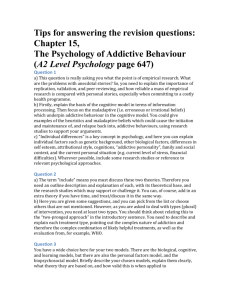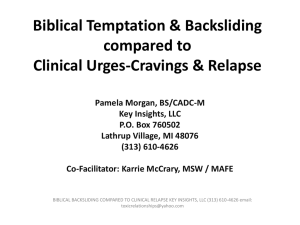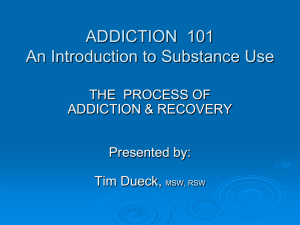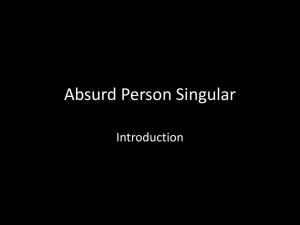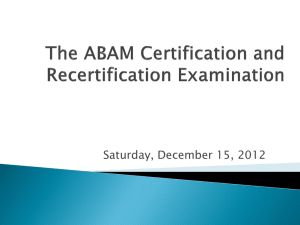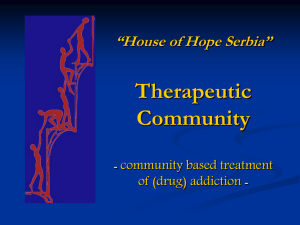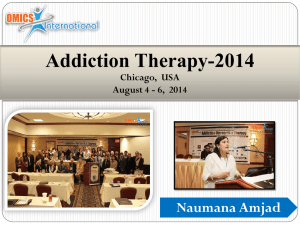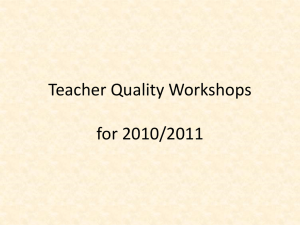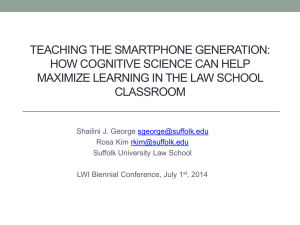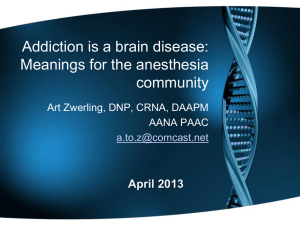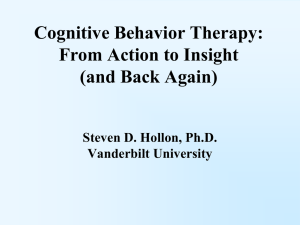LRAES of Recovery - Florida Alcohol and Drug Abuse Association
advertisement
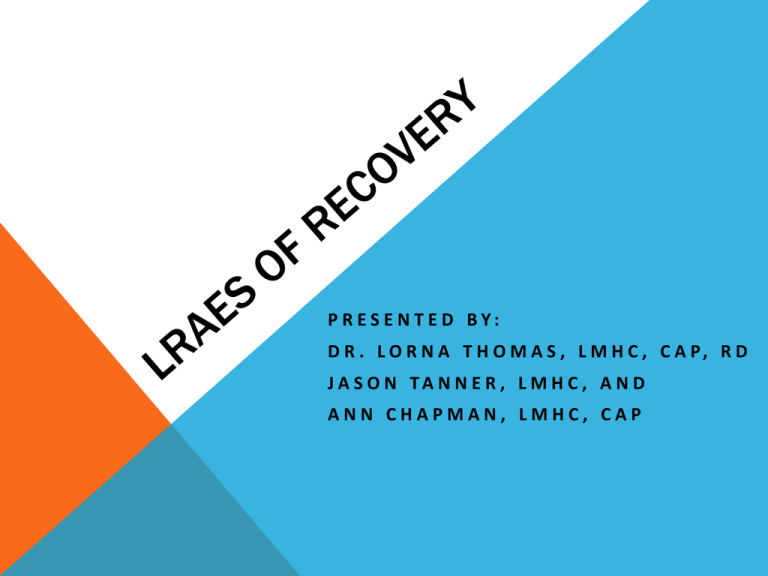
P R E S E N T E D BY: D R . L O R N A T H O M A S , L M H C , C A P, R D J A S O N TA N N E R , L M H C , A N D ANN CHAPMAN, LMHC, CAP Overview This workshop will introduce the LRAES approach of recovery and allow clinicians to discover the factors that lead clients to relapse. You will learn how each client has followed specific patterns that involve their: • • • • • Lifestyle Relationships Attitudes Emotions Substance use Overview/outcome of workshop Practitioners will gain the skills necessary to answer the client’s question of “why” in regards to their self-destructive behaviors. Clinicians will leave encouraged having not only a thorough understanding of addiction but also a clear perspective on how recovery should look with the individuals in which they serve. The Betty Ford institute (BFI) in 2007 defines recovery as a voluntarily maintained lifestyle comprised of: • Sobriety • Personal health • Citizenship A Journal of Groups in Addiction and Recovery in an effort to define recovery, say that a large number of individuals have experienced and successfully resolved dependence on alcohol and or other drugs, referring to their new sober productive lifestyle as being in “Recovery.” Assesses the lifestyle of someone in active addiction The places one would go, and how they usually spend their days: • Were you able to keep a steady job? • Did you have somewhere safe & comfortable to live? • What did you do to have fun? • Did your job, hobbies, or usual recreational activities bring you into contact with others who used? Assesses the relationships of someone in active addiction • Friendships or romantic relationships with non-using adults • Faithfulness • Pathological Conflicts • Violence • How authentic were you in your relationships? • Who did you talk to about your struggle with addiction? • What about relationships with family members? • Who did you feel you could trust and be yourself with? Assesses the attitudes of someone in active addiction • about the law • about drugs/alcohol • about power, • about what kind of place the world is? • about your beliefs about yourself? • Do you like yourself, feel proud of the kind of person you are? • How did these attitudes and beliefs affect your behavior? Assesses the emotions of someone in active addiction • What range of emotions experienced? • How often did you feel these emotions? • Did your emotions get out of control? Assesses the substance use of someone in active addiction • What was your drug of choice? • Why did you choose that substance? • How much time did you spend thinking about drugs or trying to get your next fix? Situations are not the core of relapse, thinking patterns are – they are the internal dialog that people tell themselves about the situation. Addicts and repeat offenders use a pattern of thinking, a pattern of viewing the world, and a belief system that makes it likely that they will reoffend, continue to use addictive substances or relapse after a period of recovery/sobriety. Discovering Patterns to the Addictive Lifestyle How to identify these patterns using the LRAES method Identifying these patterns is essential because they are the forces/factors that lead to relapse. How to identify cognitive distortions and thinking errors that contribute to the patterns while assessing LRAES. COGNITIVE DISTORTIONS, THINKING ERRORS, AND PRO-OFFENDING BELIEFS Cognitive distortions – things people say to themselves to give themselves permission to do things they know they really shouldn’t do. Thinking errors – are ways of thinking that are irrational or which tend to mislead us about how the world really is. Pro-offending beliefs – are general beliefs or attitudes that make it more likely to use or re-offend. Cognitive distortions or “twisted thinking” justify pro-offending beliefs, which in turn lead to relapse an addiction. The ten most used forms of twisted thinking identified by Dr. David Burns, a pioneer in CBT. • • • • All-or-nothing thinking Overgeneralization Mental Filter Discounting the Positive • Jumping to Conclusions • • • • • Magnification Emotional Reasoning Should Statements Labeling Personalization and Blame Pro-offending beliefs are at the core of the addiction and when replaced with pro-social beliefs individuals begin participating in recovery based thinking. This process requires that the counselor instill hope and enhance the client’s faith in their ability to trust that another belief system will protect them. Working with changing Cognitive Distortions, Thinking Errors, and Pro-offending Beliefs • Cognitive Distortion Assessment Tool (discuss) • Psych-Education • Group Processing • Decision Chain • LRAES Assessment Tool Psycho-Education Educate Persons Served how to engage in Pro-social thinking Corrective Thinking Thought Stopping Self Affirmation Process Group Encourage individuals to: Self Disclose Discovery New Insight New Perspective 1) Situation 2) Thoughts about the situation 3) Feelings about the thoughts 4) Response – behavior 5) Evaluate thoughts for patterns of CD’s, TE’s, and POB 6) Change thoughts to reflect more pro-social patterns of thinking REFERENCES Borchard, T. (2011). 10 Forms of Twisted Thinking. Psych Central. Retrieved on July 16, 2014, from http://psychcentral.com/blog/archives/2011/02/26/10-forms-oftwisted-thinking/ Hobson, J. (1997). Cognitive Distortion Checklist. Unpublished Manuscript. http://www.forensicpsychology.co.uk/wp-content/uploads/2011/10/WebCD.pdf Laudet, Alexandre. What does recovery mean to you? Lessons from the recovery experience for research and practice. Journal of Substance Abuse Treatment, 33, 243-256. West, Rosa. (2014). Cognitive Behavioral Therapy Advanced Tools & Skills. Florida Department of Children and Families Substance Abuse and Mental Health Program. White, W. (2007). Special Section: Defining and Measuring “Recovery.” Special article Journal of Substance Abuse Treatment, 33, 221-228.
